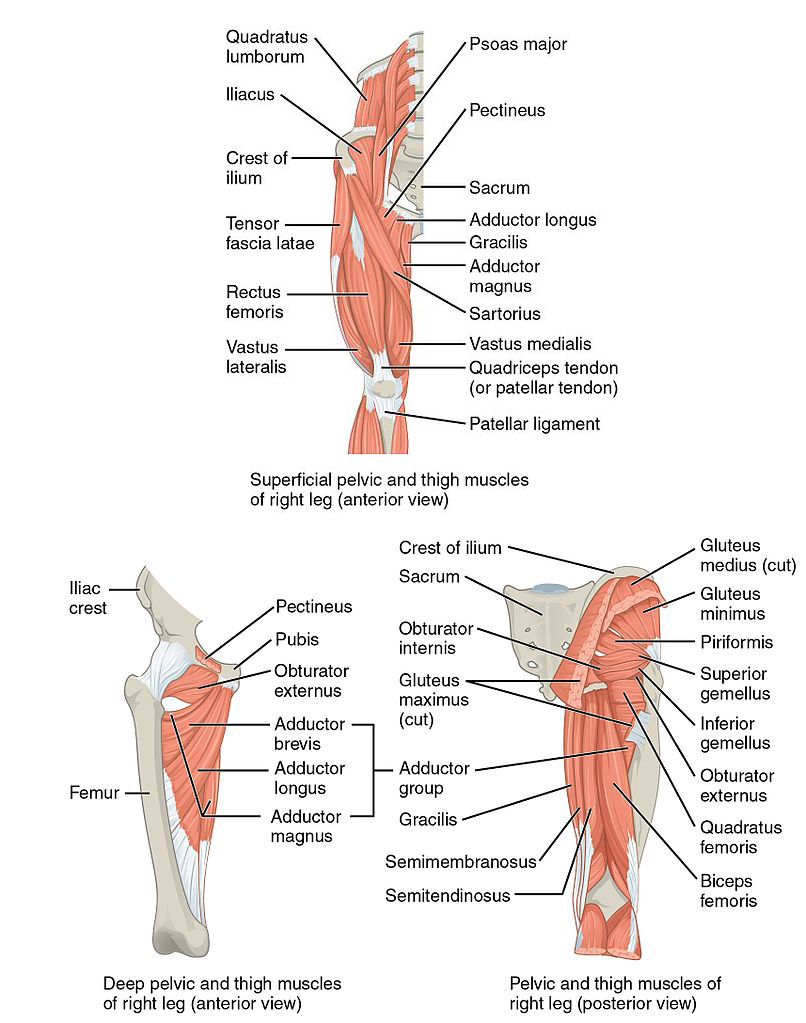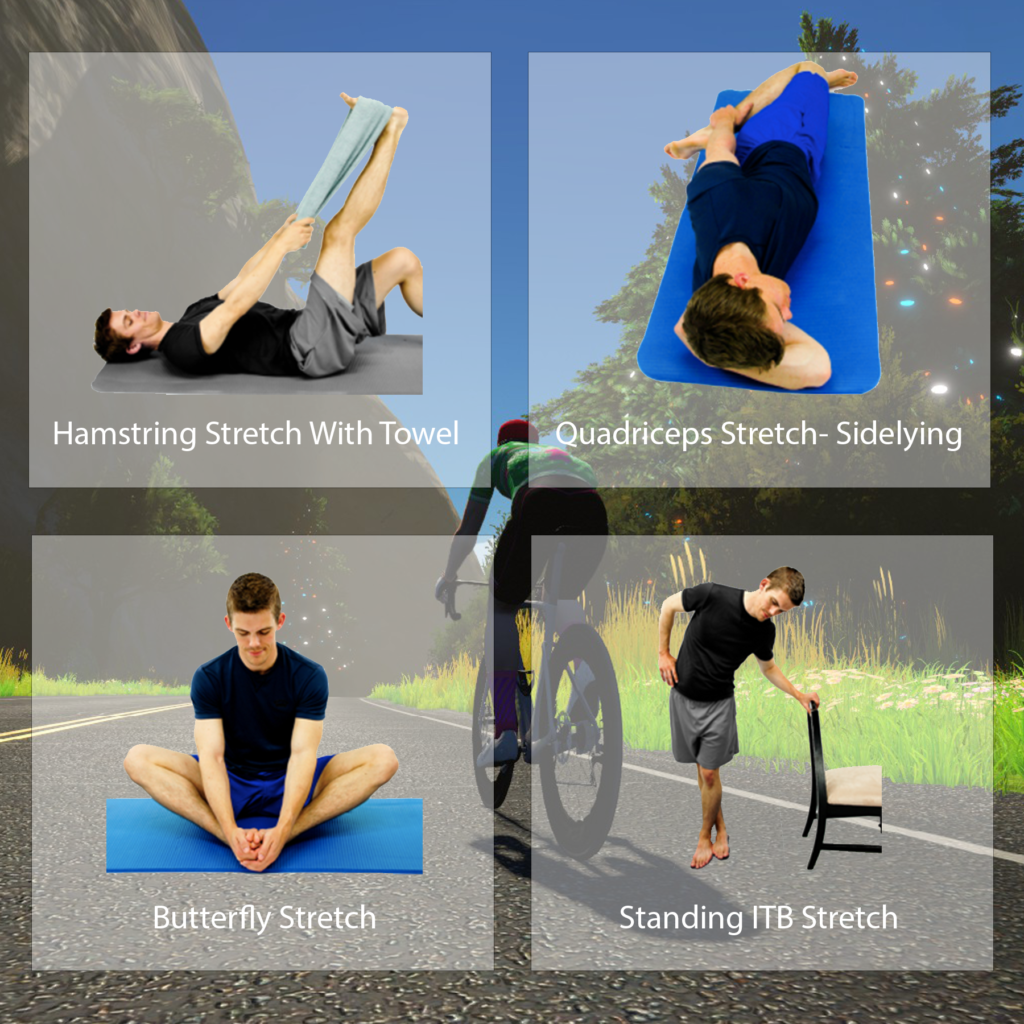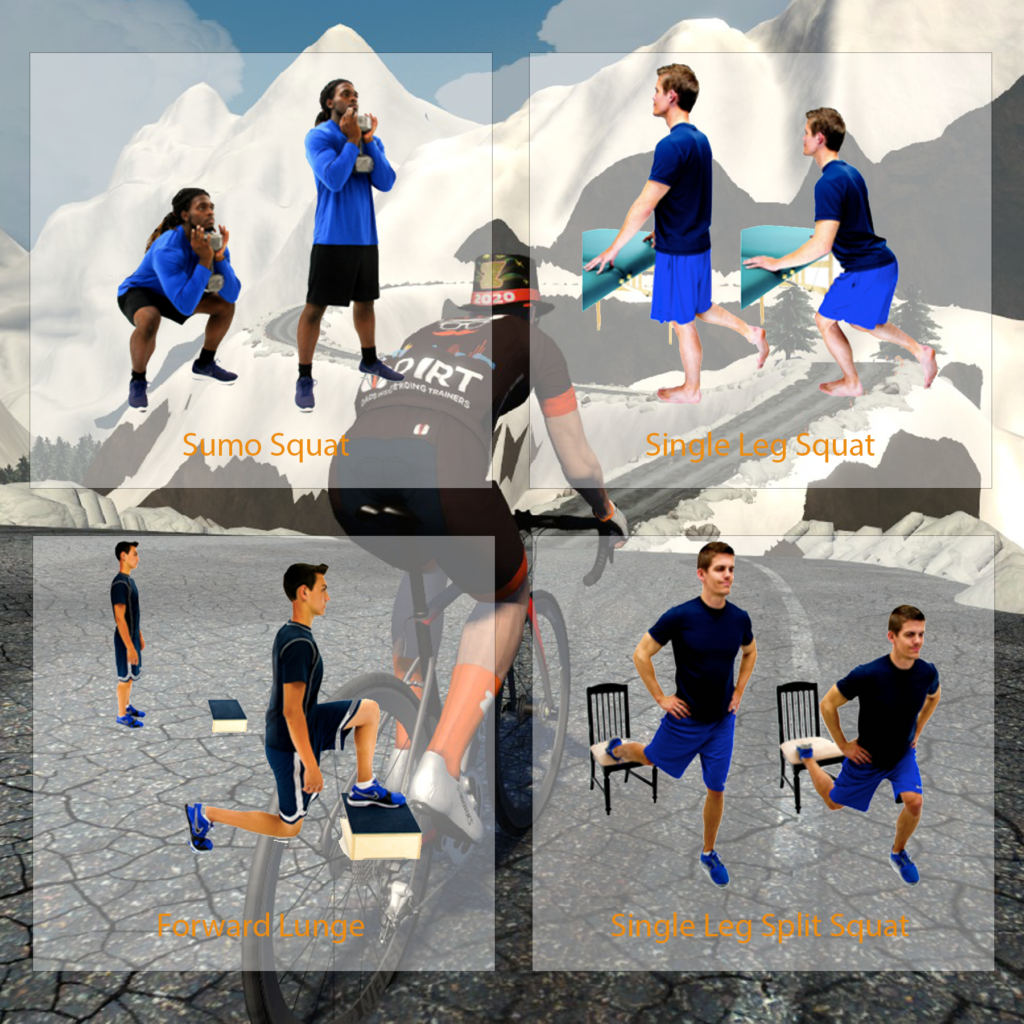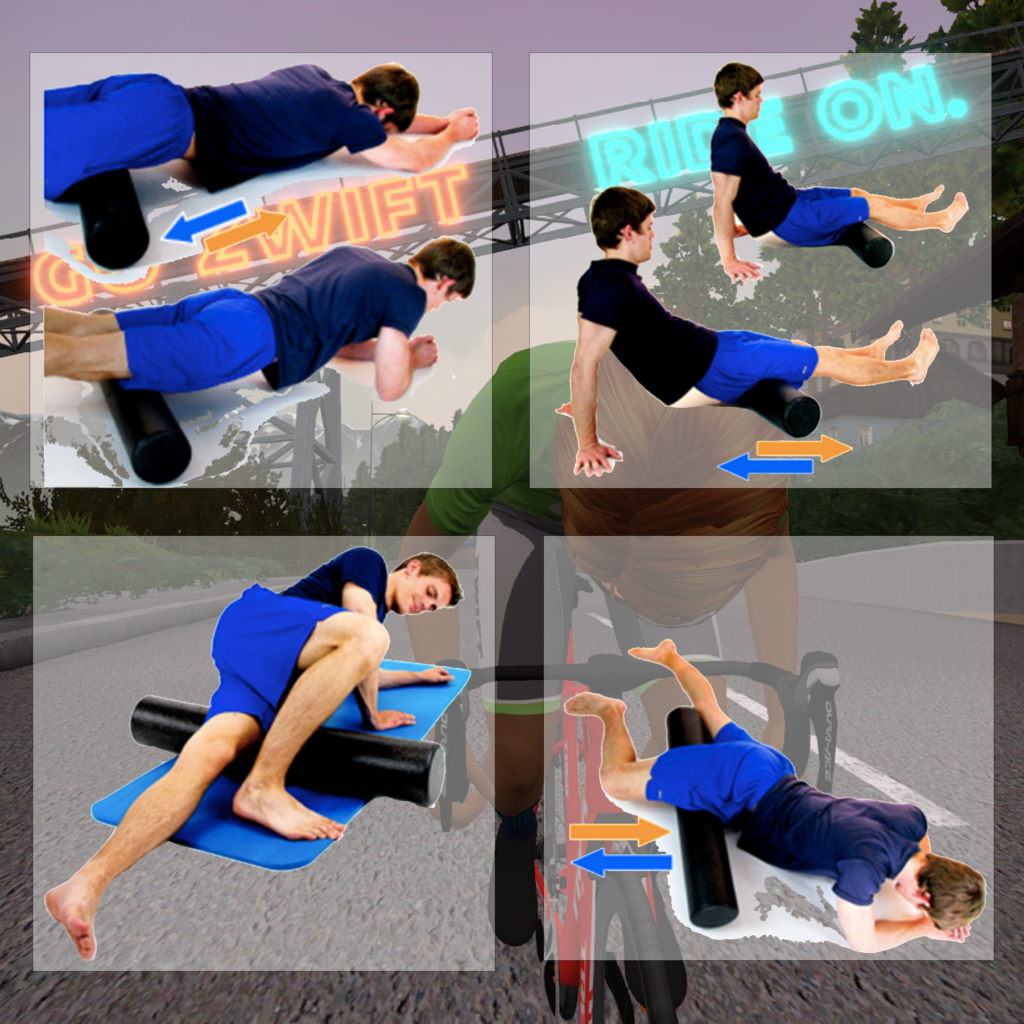The majority of cycling injuries are overuse injuries which develop gradually over time due to repeated movement patterns. The most common insidious cycling injuries tend to be knee injuries. In fact, a recent study of 109 professional cyclists revealed that 58% experienced an overuse injury over the previous year, with 23% of the injuries involving knee pain.
Basic Anatomy of the Knee
In simplistic terms, think of the knee joint as a hinge where the quadriceps muscles, which run from the front (anterior) of the thigh to the knee cap, act to pull the knee straight. The hamstring muscles, found to the rear (posterior) of the thigh, function to bend the knee. The iliotibial band, which attaches to the glutes and hip flexors, travels down the outside (lateral) of the thigh and inserts to the outside of the knee. The adductor muscles travel from the pelvis to the inner (medial) aspect of the knee.

Common Knee Pain Complaints and Injuries
- Anterior: patellofemoral pain syndrome, quadriceps tendinosis, and patellar tendinosis
- Lateral: iliotibial band syndrome
- Medial: pes anserine bursitis and mediopatellar plica syndrome
- Posterior: hamstring tendinosis
Immediate First Aid for Acute Injuries
The PRICE principle, an acronym which stands for Protection, Rest, Ice, Compression, and Elevation, is the standard for the treatment of sports injuries during their initial phase of discomfort. It should be applied as soon as possible for 24-72 hours.
Basic Bike Fit Recommendations
Simple bike fit recommendations can be made based on the location of your knee pain:
- Anterior: Increase saddle height and/or move cleat forward
- Posterior: Decrease saddle height, move saddle forward, and/or limit internal cleat rotation
- Lateral: Move cleat inward
- Medial: Move cleat outward
Active Treatment Plan For Knee Pain
What follows will be the foundation of a solid cycling injury active treatment and prevention plan, beginning with the basics of flexibility, strength, and recovery with a focus on the knee joint.
By completing all elements of the program, and building upon it with each installment of the series, you will be equipped to withstand the physical stress of cycling with less pain and greater enjoyment in addition to having a resource to refer to when symptoms necessitate.
Flexibility Exercise of the Knee

Static Stretching Tips
- Go to point of stretch and hold for 15-30 seconds
- 3 repetitions per exercise
- Don’t bounce!
Strengthening Exercise of the Knee

Strength Training Tips
- Perform 3 sets of 15 repetitions to start
- Don’t perform if experiencing severe sharp pain (PRICE)
- Increase intensity by adding weight or increasing repetitions
- Strict form is essential!
Foam Roll Recovery Techniques

Foam Rolling Benefits and Technique
- Improves circulation to enhance muscle recovery
- Relieves muscle tension to improve flexibility
- Roll slowly and when you find a tender spot, focus in on it by rolling back and forth until you feel it soften or release
The Follow-Up Appointment
Stay tuned, as in the next edition of this series I will address cycling pathology of the hip, including hip bursitis, hip flexor tendinitis, piriformis syndrome, gluteal tendinopathy, and other disorders. We will examine active intervention measures to keep you riding, training, and racing at your best!
What do you think?
Would you like to take a more extensive look at advanced strength and flexibility exercise to add to your knee program? If yes, let me know and I will examine this topic further in upcoming installments.